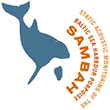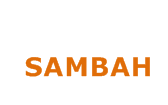Sambah objective 1Estimate densities, produce distribution maps and estimate abundances of harbour porpoises in the depth range of 5-80 meters within the project area in the Baltic Sea (South and East of the Darss and Limhamn ridges in the West, and South of latitude 60⁰20’N in the north). Estimates and distribution maps will be produced by season for the whole study area, and possibly by season within country if there are enough detections to allow this. Data on abundance is necessary to assess the conservation status of this sub-population and the negative impact of anthropogenic activities such as bycatch. It will also serve as a baseline for possible future surveys to follow up the effects of conservation measurements taken. Distribution maps are essential to identify areas of importance and areas with higher risk of anthropogenic conflicts (see Objective 2 below). Sambah objective 2Identify possible hotspots, habitat preferences and areas with higher risk of conflicts with anthropogenic activities for the Baltic Sea harbour porpoise. In Swedish waters, these results will be used to identify appropriate areas for protection, and within these areas, suggest appropriate management of anthropogenic activities with known or potential negative impact. Information on possible hotspots, habitat preferences, and areas with higher risk of conflicts with anthropogenic activities are necessary for the designation of appropriate protected areas for the harbour porpoises. Information on the distribution and extent of anthropogenic activities with known or potential negative impact on the conservation status of the harbour porpoise in these areas is crucial for efficient management of these activities. |
Sambah objective 3Increase the awareness of and knowledge about the Baltic Sea harbour porpoise among policymakers, managers, stakeholders, users of the marine environment and the general public, in the nations bordering the Baltic Sea and within the European Community. This is necessary to reach the ultimate aim of the project, i.e. a favourable conservation status of the Baltic Sea harbour porpoise. Sambah objective 4Develope and evaluate best practice methods for cost efficient, large scale surveillance of harbour porpoises in a low density area. The implementation of coherent methods throughout the distribution range of the Baltic Sea harbour porpoise will facilitate future monitoring actions to follow up the effects of conservations measurements taken on a local, regional, national or transnational scale. |



